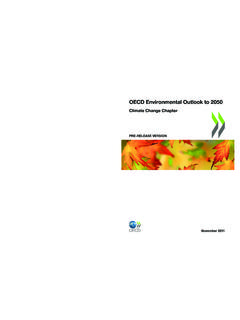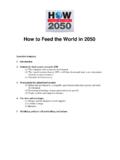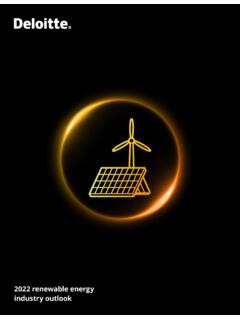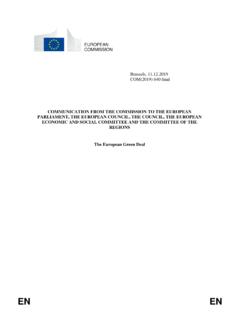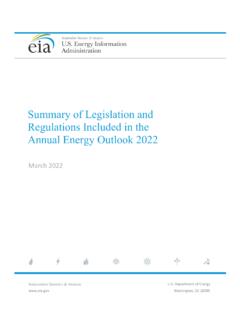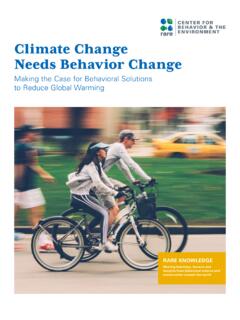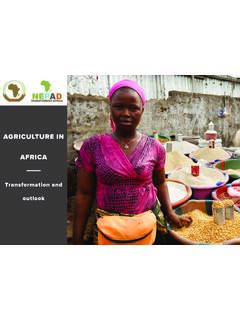Transcription of Salmon Farming Industry Handbook 2019 - Mowi
1 Salmon Farming Industry Handbook 2020 Salmon Farming Industry Handbook 2020 Salmon Farming Industry Handbook 2020 Forward-looking Statements This Handbook includes forward-looking statements that reflect Mowi's current expectations and views of future events. These forward-looking statements use terms and phrases such as "anticipate", "should", "likely", "foresee", "believe", "estimate", "expect", "intend", "could", "may", "project", "predict", "will" and similar expressions. These forward-looking statements include statements related to population growth, protein consumption, consumption of fish (including both farmed and wild), global supply and demand for fish (and Salmon in particular)
2 , aquaculture s relationship to food consumption, Salmon harvests, demographic and pricing trends, market trends, price volatility, Industry trends and strategic initiatives, the issuance and awarding of new Farming licences, governmental progress on regulatory change in the aquaculture Industry , estimated biomass utilization, salmonid health conditions as well as vaccines, medical treatments and other mitigating efforts, smolt release, development of standing biomass, trends in the seafood Industry , expected research and development expenditures, business prospects and positioning with respect to market, and the effects of any extraordinary events and various other matters (including developments with respect to laws, regulations and governmental policies regulating the Industry and changes in accounting policies, standards and interpretations).
3 The preceding list is not intended to be an exhaustive list of all our forward-looking statements. These statements are predictions based on Mowi s current estimates or expectations about future events or future results. Actual results, level of activity, performance or achievements could differ materially from those expressed or implied by the forward-looking statements as the realization of those results, the level of activity, performance or achievements are subject to many risks and uncertainties, including, but not limited to changes to the price of Salmon ; risks related to fish feed; economic and market risks; environmental risks; risks related to escapes; biological risks, including fish diseases and sea lice; product risks.
4 Regulatory risks including risk related to food safety, the aquaculture Industry , processing, competition and anti-corruption; trade restriction risks; strategic and competitive risks; and reputation risks. All forward-looking statements included in this Handbook are based on information available at the time of its release, and Mowi assumes no obligation to update any forward-looking statement. Salmon Farming Industry Handbook 2020 Mowi Salmon Farming Industry Handbook The purpose of this document is to give investors and financial analysts a better insight into the Salmon Farming Industry , and what Mowi considers to be the most important value drivers.
5 Salmon Farming Industry Handbook 2020 Table of content 1 INTRODUCTION 6 2 POSITIONING OF Salmon 8 Seafood as part of food consumption 9 Seafood as part of overall protein consumption 10 Atlantic Salmon as part of global protein consumption 11 Stagnating wild catch growing aquaculture 12 Fish consumption 13 Salmonids contribute of global seafood supply 14 Considerable opportunities within aquaculture 15 Supply of farmed and wild salmonids 16 Salmonids harvest 2019 17 3 Salmon DEMAND 18 Global macro trends 19 A healthy product 20 Resource-efficient production 21 Climate friendly production 22 Relative price development of protein products 23 4 Salmon SUPPLY 24 Total harvest of Atlantic Salmon 2000-2019 25 Diminishing growth expectations 26 Few coastlines suitable for Salmon Farming 27 5 SUSTAINABLE PRODUCTION 28 UN s Sustainable Development Goals 30 Sustainability along the supply chain 31 environmental impact of aquaculture 32 Material sustainability efforts 35 Sustainability of fish feed 36 Global sustainability initiatives 38 Transparency 39 6 Salmon MARKETS 40 Global trade flow of farmed Atlantic Salmon 41 Farmed Atlantic Salmon by market 42 Development of value
6 Vs. volume 43 Price neutral demand growth - historically 6-7% 44 Historic price development 45 Different sizes different prices (Norway) 46 7 Industry STRUCTURE 47 Top 5-10 players of farmed Atlantic Salmon 2019 48 Number of players in producing countries 49 5 | P a g e 8 Salmon PRODUCTION AND COST STRUCTURE 50 Establishing a Salmon farm 51 The Atlantic Salmon life/production cycle 52 Influence of seawater temperature 54 Production inputs 55 Cost component disease and mortality 57 Accounting principles for biological assets 58 Economics of Salmon Farming 59 Cost structure Industry Norway 2010-2019 60 9 FEED PRODUCTION 61 Overview of feed market 62 Relative feeding (*)
7 64 Salmon feed producers 65 Salmon feed ingredients 66 Feed raw material market 68 10 FINANCIAL CONSIDERATIONS 69 Working capital 70 Capital return analysis 73 Currency overview 75 Price, cost and EBIT development in Norway 77 Effects of geographical diversification 78 11 BARRIERS TO ENTRY LICENCES 79 Regulation of fish Farming in Norway 81 Regulation of fish Farming in Scotland 85 Regulation of fish Farming in Ireland 86 Regulation of fish Farming in Chile 87 Regulation of fish Farming in Canada 88 Regulation of fish Farming in the Faroe Islands 89 12 RISK FACTORS 91 Salmon health and welfare 92 Most important health risks to Salmon 93 Fish health and vaccination (Norway)
8 94 Research and development focus 95 13 INDICATORS DETERMINING HARVEST VOLUMES 96 Projecting future harvest volumes 97 Yield per smolt 98 Development in biomass during the year 99 14 SECONDARY PROCESSING (VAP) 100 European value-added processing (VAP) Industry 102 Market segment 103 The European market for smoked Salmon 104 Branding and product innovation 105 APPENDIX 106 Salmon Farming Industry Handbook 2020 1 Introduction Introduction 7 | P a g e Salmon is the common name for several species of fish of the family Salmonidae ( Atlantic Salmon , Pacific Salmon ), while other species in the family are called trout ( brown trout, seawater trout).
9 Although several of these species are available from both wild and farmed sources, most commercially available Atlantic Salmon is farmed. Salmon live in the Atlantic and the Pacific Ocean, as well as the Great Lakes (North America) and other landlocked lakes. Typically, Salmon are anadromous: they are born in freshwater, migrate to the ocean, then return to freshwater to reproduce. About 69% of the world s Salmon harvest is farmed. Farming mainly takes place in large nets in sheltered waters such as fjords or bays. Most farmed Salmon come from Norway, Chile, Scotland and Canada.
10 Salmon is a popular food. Salmon consumption is considered to be healthy due to its high content of protein and omega-3 fatty acids and it is also a good source of minerals and vitamins. Salmon Farming Industry Handbook 2020 2 Positioning of Salmon Positioning of Salmon 9 | P a g e Seafood as part of food consumption The average human eats around 716 kg of food each year. Most of this food is produce such as vegetables, fruits, and starchy roots. Animal protein, such as seafood, poultry, pork, and beef, amounts to 9% of the total diet. Meat as a food source has gradually become more important.
